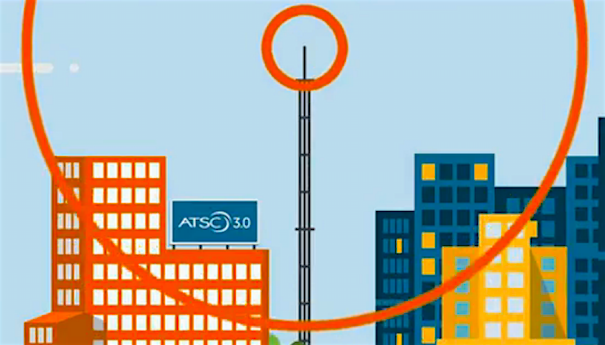BIA: NextGen TV Could Add $10.7B in New Revenue by 2030
New datacasting revenue from NextGen TV could account for 22% of total local broadcasting revenues by 2030 according to BIA Advisory Services

During a recent webinar sharing ATSC 3.0 tests and insights from Korean and the U.S. experts, BIA Advisory Services presented new data estimating that datacasting revenue from NextGen broadcasts could bring in a significant amount of revenue of $5 billion by 2027 and $10.7 billion in new revenue by 2030.
“Broadcaster expansion into adjacent data distribution markets [with datacasting services will] drive significant incremental non-core revenue and valuation growth,” explained Rick Ducey, managing director of BIA Advisory Services, speaking at the “Korea—U.S. NextGen Broadcast Webinar” on November 23.
The 2030 $10.7 billion estimate is BIA’s “middle case” scenario of 20% of total spectrum capacity being used for datacasting. In its high case, involving 27% of spectrum, those services could produce a whopping $15 billion; in the low case of using 12% of spectrum, they would still bring in $6.4 billion in 2030.
The data is particularly good news for broadcasters facing a relatively stagnant ad market. BIA is predicting that revenue from TV over the air offers will see only a modest rise from $19.85 billion in 2022 to $20.13 billion in 2030 while subscriber fees from retransmission consent agreements will grow from $14.55 billion in 2022 to $17.37 billion in 2030.
By 2030, datacasting will account for about 22% of their total revenue.
“It's serious money,” he said. “It's a serious business commitment and endeavor….This is a significant amount of capital that will be infused into the broadcast industry."
Ducey said that he expects these datacasting services to evolve through four phases from proof of technology to proof of viable use cases, targetable and sustainable customer bases and scalable, profitable business models.
Get the TV Tech Newsletter
The professional video industry's #1 source for news, trends and product and tech information. Sign up below.
Potential use cases include agriculture, automotive for the connected car, digital signage, education and distance learning, GPS, IoT, public safety for emergency alerts and other features, telecom for hybrid NextGen TV/5G network applications and telemedicine.
Ducey also noted that broadcasters will start to generate new revenue from data casting as early as 2024, with those revenues hitting $1.7 billion in 2025 and $5 billion by 2027.
“The curve really starts this story in 2022, 2023 with low dollar volumes, and scales up with ….a sustainable, scalable sort of business offering $15 billion [in the high case], nearly $11 billion in the middle case and over $6 billion dollars for the low case,” he said. “So….in the least likely case, broadcasters are gonna be able to pick up another $6.4 billion with the use of NextGen capabilities [and if] things go well could be $15 billion, more than twice as much of that.”
George Winslow is the senior content producer for TV Tech. He has written about the television, media and technology industries for nearly 30 years for such publications as Broadcasting & Cable, Multichannel News and TV Tech. Over the years, he has edited a number of magazines, including Multichannel News International and World Screen, and moderated panels at such major industry events as NAB and MIP TV. He has published two books and dozens of encyclopedia articles on such subjects as the media, New York City history and economics.

